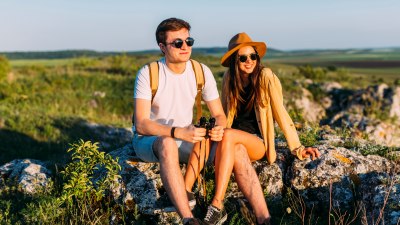How to Stay Safe from Wildlife While Camping in Remote Areas
Learn essential safety tips to protect yourself from wildlife while camping in remote areas.

Camping in remote areas can provide a truly enriching outdoor experience, but it also comes with certain risks, particularly concerning wildlife encounters. Whether you're in the deep woods, near a lake, or up in the mountains, understanding how to stay safe from wildlife is essential for any camping trip. This guide will offer practical tips and strategies for minimizing wildlife encounters while enjoying the great outdoors.
1. Understand the Wildlife in the Area
Before you even set foot in a remote camping location, research the types of wildlife you might encounter. Different regions are home to various animals, each with their own habits and behaviors. Whether it’s bears, wolves, snakes, or smaller critters like raccoons, knowing what to expect can prepare you mentally and physically. Check local wildlife offices, park websites, or community forums online for insights specific to the location you plan to visit.
2. Choose the Right Campsite
The location you choose for your campsite can significantly impact your safety regarding wildlife. Avoid setting up camp near animal trails, berry patches, or water sources, as these spots are likely to attract wildlife. Ideally, choose a campsite that is at least 200 feet away from these attractions. Additionally, selecting an elevated area can provide a better view of your surroundings and a potential buffer against invading wildlife.
3. Store Food Properly
Food storage is one of the most critical aspects of camping safety concerning wildlife. Use bear-proof containers if you're camping in bear country, and always fuel your fire at least 100 yards away from your sleeping area. If bear-proof containers are not available, hanging your food at least 10-15 feet above the ground and 4-5 feet away from the trunk of a tree can deter animals from accessing your supplies. Avoid keeping food in tents, as the smell can attract unwanted visitors.
4. Dispose of Waste Correctly
Just as important as storing food properly is the safe disposal of food waste. Always pack out what you pack in. This includes scraps and other waste products like hygiene items. To further deter wildlife, clean up cooking areas thoroughly and scatter any food scraps widely across the ground rather than leaving concentrated piles. In case of solid waste, look for campgrounds with facilities or follow Leave No Trace principles for waste management.
5. Make Noise
Wild animals are more afraid of humans than we might think. Making noise can alert animals of your presence and encourage them to steer clear of your campsite. Talk loudly, sing, or use bells as part of your camping group activities. Additionally, when hiking on trails, be sure to make noise, as this will help prevent surprising any wildlife, especially in areas where visibility is limited.
6. Travel in Groups
There’s strength in numbers, and this principle applies to wildlife safety. When camping in remote areas, try to hike and explore in groups rather than going solo. This not only acts as a deterrent to wildlife but also enhances safety in case of an emergency. Predators are less likely to approach larger groups, thus reducing potential encounters.
7. Be Cautious When Eating
When it's time to eat, be wary of your surroundings. Stay alert to your environment, as wildlife can be drawn to the mistaken impression of easy food. Consume meals within your tent or designated eating area, and avoid dropping any food on the ground. Pets can also attract wildlife, so keep furry companions leashed and away from food when possible.
8. Know Your Wildlife
Understanding the types of wildlife in your camping area can help in anticipating potential encounters. For instance, black bears are curious but less aggressive than grizzly bears. Still, if you encounter either, it’s crucial to know how to react. The best defense against bears is to avoid attracting them altogether. If encountering a bear, make yourself look larger, speak in a calm voice, and back away slowly—never run.
9. Bear Sprays and Other Deterrents
Consider carrying bear spray and learning how to use it effectively before venturing into the woods. Bear spray is proven to be effective in deterring bears during close encounters. Additionally, having a whistle or air horn can draw attention if you’re in distress from a wildlife encounter or if an animal is getting too close for comfort.
10. Maintain a Clean Environment
Keeping your camping area tidy goes a long way in avoiding wildlife encounters. Clean up after cooking and eating, securing trash in seals to make it less appealing. Ensure food containers are empty and stored properly. Having a clean site is crucial in preventing animals from being attracted to your area.
11. Avoid Feeding Wildlife
While it may be tempting to feed wildlife to get a closer look, it can be incredibly harmful to both animals and humans. Not only does feeding wildlife alter their natural behavior, but it also encourages them to come closer to humans for food, which can lead to dangerous encounters. Observe animals from a distance, taking photos or cautious glimpses without alluring them with food.
12. Use Technology to Your Advantage
In the digital age, take advantage of technology to enhance your safety. Download wildlife tracking apps that can alert you to potential encounters and share tips from others who’ve visited the same area. GPS technology can also ensure you never lose your way home, making it easier to avoid unwanted wildlife areas.
13. Keep Calm in Encounters
If you do find yourself face-to-face with wildlife, the most important aspect is to remain calm. Sudden movements or loud noises can provoke animals. Assess the situation quietly; if the animal is aggressive, try to retreat slowly and quietly. Remember, most wildlife is more afraid of you than you are of them, so keep your wits about you.
14. Practice Leave No Trace Principles
The Leave No Trace principles play an essential role in wildlife safety. By adhering to these guidelines, you reduce your impact on nature, keeping both you and local wildlife safe. Make sure to educate yourself on these seven principles: plan ahead, travel and camp on durable surfaces, dispose of waste properly, leave what you find, minimize campfire impact, respect wildlife, and be considerate of other visitors.
15. Be Prepared for an Emergency
Despite your best efforts, wildlife encounters can still happen. Pack a first-aid kit and familiarize yourself with basic wilderness first aid techniques. Knowing how to handle injuries caused by wildlife encounters can make a significant difference. Additionally, have an emergency plan and contact numbers saved on your phone for local wildlife authorities or rangers.
16. Responding to Wildlife Attacks
If an attack were to occur, response methods will vary based on the animal involved. For bear attacks, drop to the ground and play dead if it’s a grizzly bear; conversely, fight back against black bears if they attack. With large predators like cougars, making yourself appear larger and aggressive can deter them. For snake bites, seek medical attention immediately while keeping movement to a minimum.
Staying safe from wildlife while camping in remote areas requires awareness, preparation, and respect for nature. By understanding the wildlife around you and following the best practices outlined in this guide, you can have a memorable camping experience while minimizing risks. Embrace the beauty of the outdoors while prioritizing your safety and the safety of the wildlife that inhabits those spaces. The wilderness is a place of wonder; preparing for it ensures you can enjoy these beautiful moments without worry.











